The Four Seasons: A Friendship Poem Disguised As A Hollywood Rom-Com
The Four Seasons explores time’s inevitable passage and its impact on people’s resistance to change, particularly in long-time friendships.
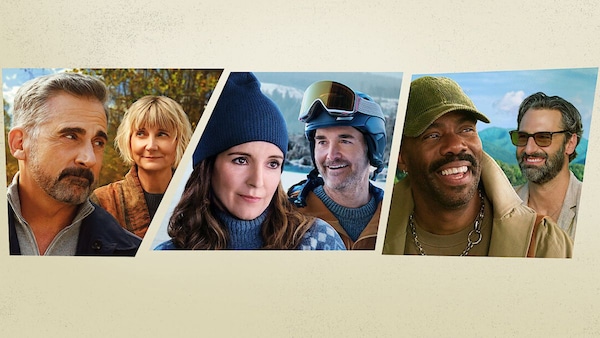
Promo poster for The Four Seasons.
Last Updated: 09.29 PM, May 09, 2025
A MINISERIES ADAPTATION of Alan Alda’s moderately popular 1981 rom-com of the same name, The Four Seasons revolves around a group of six lifelong friends — or three couples — on four seasonal trips together. Two episodes per ‘season’: a neat riff on the TV-sitcom template. It opens with a lake-house weekend to celebrate the 25th anniversary of one of the couples. Things go awry for the gang when the seemingly loving husband expresses his desire to divorce his wife. The woman, on her part, is blissfully planning a vow renewal ceremony. The consensus among the friends is that the successful 50-something man is having a midlife crisis. The consensus is also that nobody is as happy as they appear.
Once my middle-class brain came to terms with the fact that these nice American folks can afford to travel four times a year (or that they have 4 seasons!), I started to appreciate some of the cultural updates from Alda’s decidedly heterosexual film. It’s almost like a diversity in-joke by co-creator (and actor) Tina Fey. Not only is one of the characters Black (Danny played by Colman Domingo), he’s also gay — and in an open marriage with an artful Italian lover named Claude (‘Claudia’ in the film). The divorce-minded husband, Nick, is played by Funny-Nice Guy Steve Carell, a role that’s somehow both as subversive as his predatory newsman in The Morning Show (his arc has echoes of the show, almost as if a morally ambivalent Carell is a deal-breaker in fiction), and as safe as his rom-com goodness in films like Dan In Real Life, Crazy Stupid Love or even the Despicable Me franchise. Fey herself plays the least fun and most uppity friend of the lot, Kate, who’s married to the Phil-Dunphy-coded Jack (Will Forte). She looks like someone who’s always on the brink of cracking a joke, but adulting stops her.
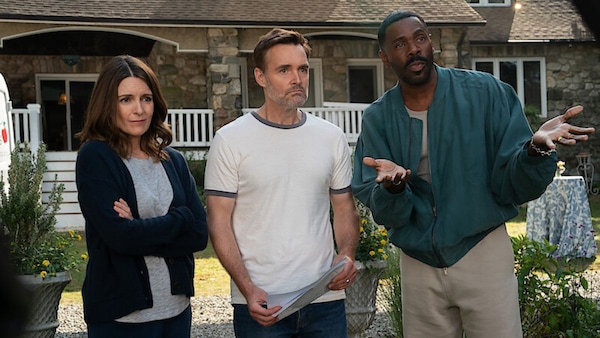
The characterisation isn’t the only thing that challenges our notions of how ‘lightweight’ stories unfold. You keep expecting a laugh-out-loud comedy, not least because of Fey’s creative involvement, but The Four Seasons keeps invoking the gravity of the Vivaldi composition it’s named after. A lot of it preys on our conditioning. For instance, when Nick declares that he is unhappy and plans to divorce Anne, a series of entertaining possibilities — based on years of the Hollywood rom-com algorithm — occur to the viewer. My first guess during the first two episodes was that the divorce would tear everyone but Nick and Anne apart: the other ‘normal’ couples would have to confront their own secrets and fissures, and the irony might be that Nick and Anne reunite by the end. But there are hints of an alt-trope approach: like when Anne plans a vow renewal ceremony, it’s implied that she’s doing it because she suspects he’s drifting away and she wants to keep them together.

Over the next two episodes, it emerges — during a tropical vacation at an eco resort — that Nick is dating a young and adventurous woman named Ginny. It looks doomed; he even injures himself while trying to climb a rock to impress her. When Kate sees him crying alone, he convinces nobody by claiming they were tears of joy for living fully again. Simultaneously, a few cracks begin to show within the other two couples: Jack and Kate realise they aren’t as ‘fun’ anymore, and Danny can’t handle Claude’s incessant fussing about his health. Basically, it’s going in the direction one expects it to — except it also isn’t. There is tension in their marriages, but there’s also a sense of wanting to be together despite the problems. And surprisingly, not even a disastrous storm — and Anne’s non-coincidental presence on the island — can destroy Nick’s ‘affair’. Ginny is not as ditzy as we (or the other oldies) think she is; if anything, she’s kind of cool.
Over the next two episodes, the gang visits their Alma Mater, where their kids are now studying. Nick brings Ginny, much to the disgust of his rebellious daughter, who directs an entire play to broadcast her disgust. There are massive bust-ups between Jack and Kate, as well as Danny and Claude. You’d think Ginny would take offence, feel unwanted and insulted, and leave Nick. You’d also think Anne would have the last laugh, the arc of getting back together might begin here. But again, it’s disarming to see that Nick and Ginny are still going strong. In fact, Ginny gives him the most adult advice possible to patch up with his daughter. The imminent split in the couples threatens to happen, but it doesn’t. It’s almost as if the others grudgingly respect Nick for taking the step he did — like that childhood friend who follows their passion against all odds (and hate). Worse, he’s walking the talk.
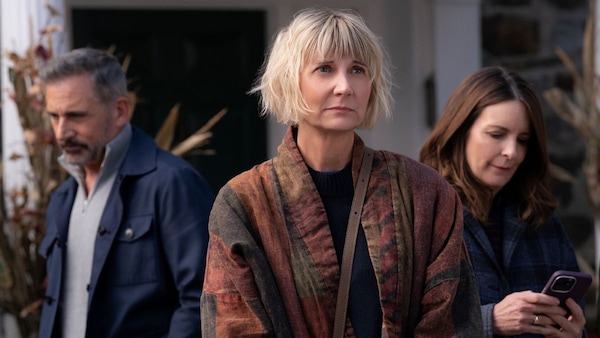
Over the final two episodes, the series completes its narrative coup. The signs are strong that Nick realises he’s made a mistake on a weekend with Ginny’s ‘younger’ friends. The cracks deepen. He even shares a fond video call with the gang, who are at a ski resort with Anne and her new boyfriend. A life-changing event happens, too. Nick is visibly missing the gang towards the end, and most shows might have demonised Ginny or any other outsider for driving a wedge between them. But the writing turns the tables by calling out the friends for scrutinising Ginny — it actually sympathises with her, urging the viewer to see her as a woman who’s genuinely in love with an older man. She is not the homewrecker by virtue of being young, attractive and a ‘second wind’ for Nick. They see her as the other, but her niceness and maturity reverse the most traditional rom-com trope. It’s a bit like watching the early stages of Gloria in Modern Family — where she’s defying the perception of being a gold-digger but also not yearning for the family’s (and society’s) validation at once.
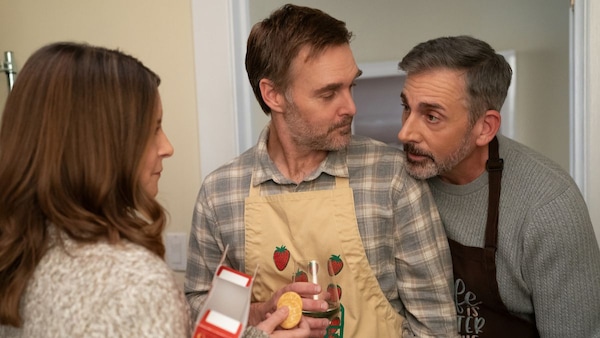
As a result, it emerges that Four Seasons is more about time than people or places: the passing of it, the inevitability and perspective it brings. The same four seasons unfold every year, lulling humans into a comforting cycle of sameness and security; it makes everyone a little less receptive — and a little more averse — to change. More so in the case of long-time friends, who tend to (selfishly) resent one of their own for disrupting the equilibrium of their arrangement. The most remarkable thing this series does is that, like time and friendship, it doesn’t judge any of its characters. This is rare for any story with conflicts and resolutions. There is no moral high ground because, at the end of the day, they’re all growing old together. Everyone has happy and sad moments, not winning and losing ones. Nothing unfolds the way we expect it to because fiction often offers us what reality cannot — including dramatic endings, emotional upheavals and absolute consequences.
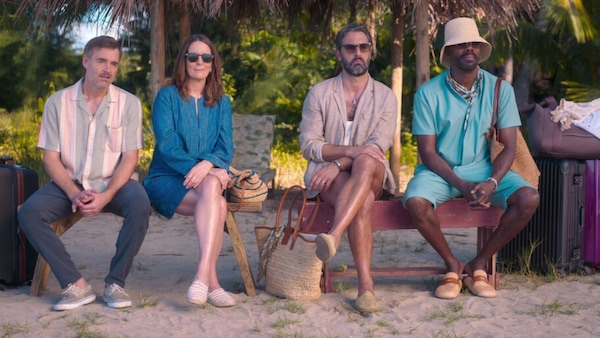
The simpler way is to conclude that friends who stand the test of time are like seasons: they change as individuals, not as a sequence. But the better way is to conclude that friendships humanise everything else: love, marriage, parenthood, heartbreak and death. We are wired to see these characters as couples and labels and singles and parents, but they cannot see themselves without each other. They are nothing without the pressures and biases, and the permanence of lifelong bonds. When people dream of the perfect adulthood, they claim to dream about a big and happy family. But what people really dream of is living next to their friends or holidaying with them across sickness, health — and all seasons.
I know I do. I always imagine going back to the bedroom to gossip with my partner on an eventful couples trip. It’s what we all do to feel better about ourselves. We share our little observations like excited cinephiles who’ve spotted all the clues and easter eggs in the latest Tarantino movie. But the point is to be a cinephile — or, in other words, to have the trusted friends and routine trips that allow for this companionship to develop and forge its own language. After all, it’s the four seasons that lay the foundation for a forever.
The Four Seasons is currently streaming on Netflix.
